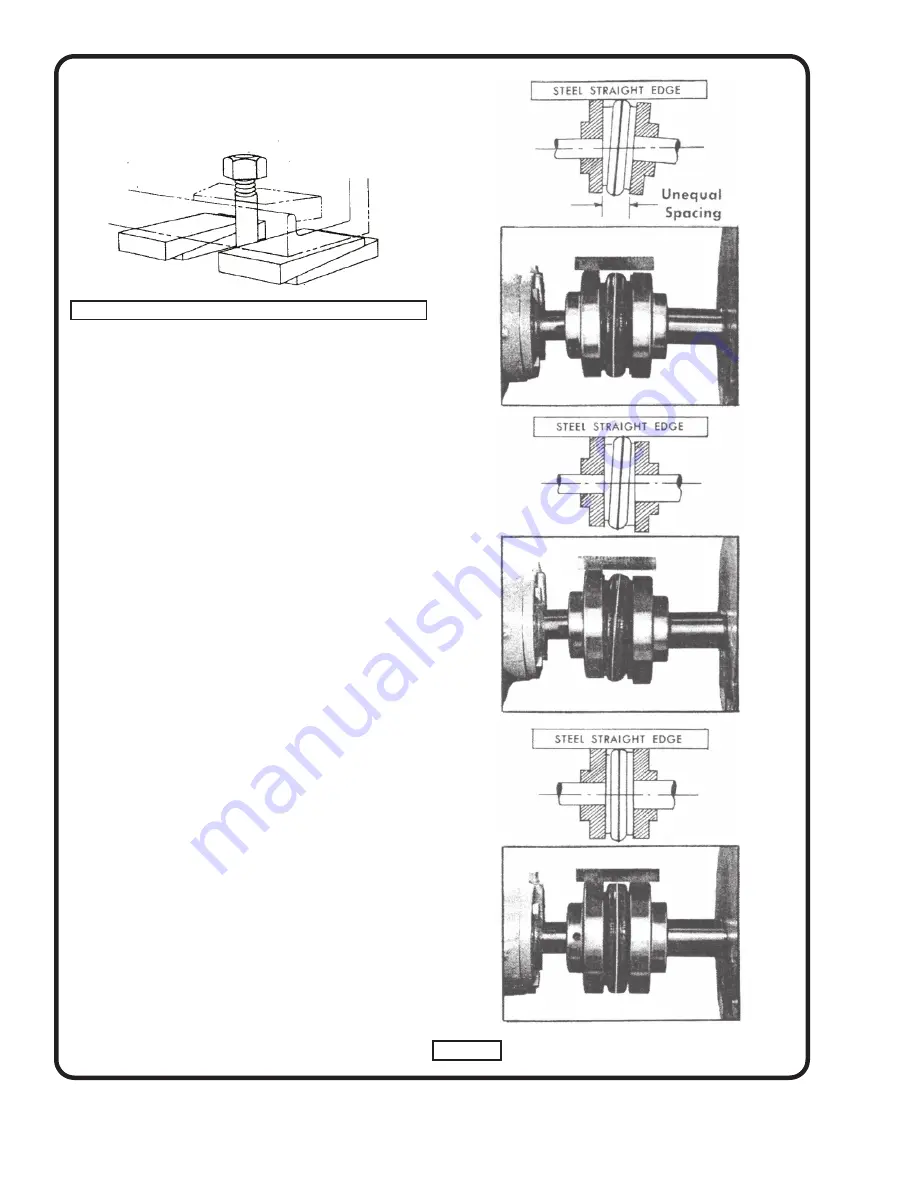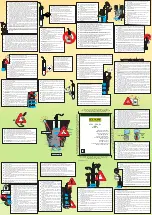
4
Level sub-base, to give a space of about 3/4”
for grouting, using rectangular metal blocks and shims,
or wedges having a small taper as shown in Figure 2.
3. Align the pump and motor shafts at the fl exible coupling.
Hold a straight edge on the top of the coupling so that it
extends over both halves. Straight edge should rest
evenly across both rims of the coupling halves when the
straight edge is placed on the top, sides and bottom with
no light showing between the straight edge and rim of
the coupling. Also check vertical alignment of the
coupling faces with a thickness gauge. Faces must be
parallel and spaced about 1/8” apart when the motor
rotor is at its extreme position towards the pump. This
safe guards the pump shaft being crowded endwise by
the motor shaft end play. By proper adjustment of metal
shims under pump or motor, both halves of the fl exible
coupling can be brought into alignment See Figure 3.
4. Build a dam around sub-base at least 2” high for
grouting in with thin cement and after cement has
hardened, tighten anchor bolts.
5. Recheck alignment at drive coupling. Any misalignment
now apparent should be corrected by metal shims
under pump or motor. When properly aligned, pump
shaft should turn freely by hand.
6. A foot valve and strainer must be installed on the lower
end of the suction pipe to keep pump completely
fi lled with liquid when the pump is used under suction
lift conditions. Connect suction pipe to pump casing.
When a foot valve is used, it is
absolutely necessary
to install a check valve
in the discharge line near the
pump to prevent possible broken casing due to line
shock or surge when the pump stops. A gate valve
should also be installed in the discharge line. Connect
discharge pipe to pump casing.
It is very important that the suction and discharge pipes
“line up” naturally with the pump. DO NOT “pull” pipes
into position with fl ange bolts. Support pipes
independently of the pump to eliminate all strain on
the pump casing. Select discharge pipe size so velocity
is under 8 feet per second. Avoid sharp changes in
pipe sizes.
Figure 2. Adjusting Wedges for Mounting
Figure 3
PERFECT
ALIGMENT
PARALLEL
MISALIGNMENT
ANGULAR
MISALIGNMENT
































